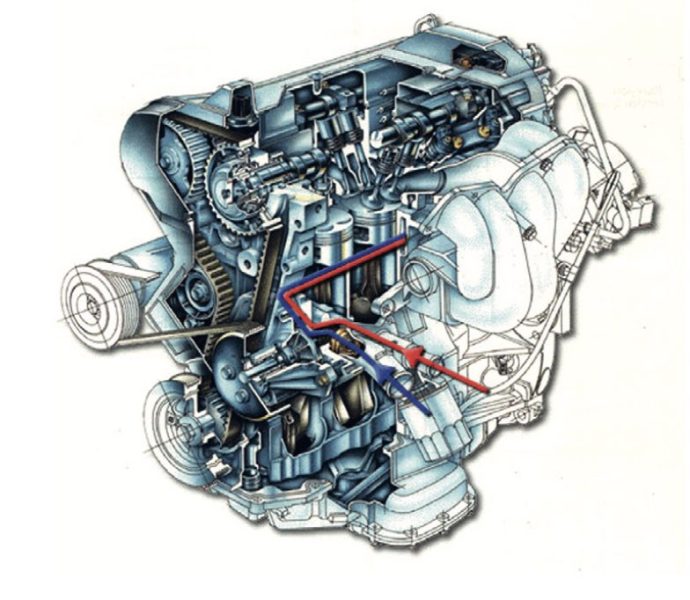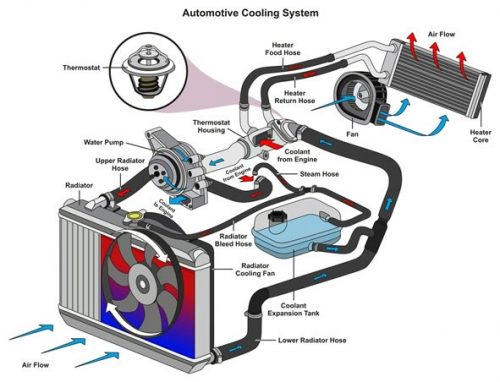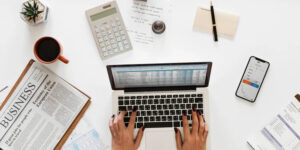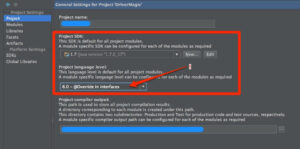Introduction:
Your car’s engine generates a lot of heat, and without proper cooling, it can quickly overheat and cause serious damage. That’s why every car comes equipped with a cooling system, which includes an engine coolant circuit. In this blog, we’ll take a closer look at the engine coolant circuit and how it works to keep your engine running smoothly.
What is the Engine Coolant Circuit?
The engine coolant circuit is a closed-loop system that circulates coolant throughout the engine and the radiator to keep it from overheating. The coolant is a mixture of water and antifreeze, which helps to regulate the temperature of the engine and prevent corrosion.
How Does the Engine Coolant Circuit Work?
The engine coolant circuit consists of several key components, including the engine, the radiator, the thermostat, the water pump, and the hoses. Coolant is pumped from the radiator through the engine block and cylinder head, where it absorbs heat from the engine components. The heated coolant then flows back to the radiator, where it is cooled by the air flowing through the fins and tubes. The cooled coolant is then pumped back through the engine to repeat the cycle.
The thermostat plays a critical role in regulating the engine temperature. It’s located between the engine and the radiator and acts as a valve to control the flow of coolant. When the engine is cold, the thermostat remains closed, preventing coolant from flowing through the engine. Once the engine reaches its operating temperature, the thermostat opens, allowing coolant to circulate through the engine and the radiator.
The water pump is responsible for circulating the coolant throughout the engine. It’s typically located on the front of the engine and is driven by a belt connected to the crankshaft. As the engine runs, the water pump circulates the coolant through the engine and the radiator.
The hoses connect the various components of the cooling system, allowing coolant to flow between them. Over time, the hoses can become brittle and crack, which can cause leaks and affect the performance of the cooling system.
Why is the Engine Coolant Circuit Important?
The engine coolant circuit is critical to the proper operation of your car’s engine. Without a functioning cooling system, the engine can quickly overheat, leading to serious damage or even engine failure. In addition to preventing overheating, the coolant also helps to lubricate the engine components and prevent corrosion.
Maintaining the Engine Coolant Circuit:
To keep your engine coolant circuit functioning properly, it’s important to perform regular maintenance. This includes checking the coolant level and condition, inspecting the hoses for signs of wear, and replacing the coolant at the recommended intervals. It’s also important to have your cooling system inspected by a professional mechanic on a regular basis to catch any potential issues before they become more serious.

Conclusion:
The engine coolant circuit is a critical component of your car’s cooling system. By understanding how it works and performing regular maintenance, you can help to ensure that your engine stays cool and running smoothly for years to come. If you have any concerns about your engine coolant circuit or cooling system, be sure to consult with a professional mechanic.
Coolant:
The coolant used in the engine coolant circuit is typically a mixture of water and antifreeze. The water helps to transfer heat away from the engine components, while the antifreeze helps to prevent the coolant from freezing in cold temperatures and boiling in hot temperatures. Antifreeze also contains additives that help to prevent corrosion and protect the engine components.
Radiator:
The radiator is a key component of the engine coolant circuit. It’s typically located at the front of the car, behind the grille. The radiator is designed to dissipate heat from the coolant as it flows through it. The radiator consists of a series of tubes and fins, which increase the surface area of the radiator and allow for more efficient heat transfer. As air flows through the fins, it helps to cool the coolant, which is then pumped back to the engine.
Thermostat:
The thermostat is a small valve located between the engine and the radiator. Its purpose is to regulate the flow of coolant through the engine based on its temperature. When the engine is cold, the thermostat remains closed, preventing coolant from flowing through the engine. This allows the engine to warm up faster. Once the engine reaches its operating temperature, the thermostat opens, allowing coolant to flow through the engine and the radiator.
Water Pump:
The water pump is responsible for circulating the coolant throughout the engine coolant circuit. It’s typically driven by a belt connected to the crankshaft. As the engine runs, the water pump circulates the coolant through the engine and the radiator. The water pump has impellers that spin and pump the coolant through the engine coolant circuit.
Hoses:
The hoses are used to connect the various components of the engine coolant circuit. They’re typically made of rubber and can become brittle and crack over time. This can lead to leaks and affect the performance of the cooling system. It’s important to inspect the hoses regularly and replace them if they show signs of wear.
Importance of Maintaining the Engine Coolant Circuit:
Maintaining the engine coolant circuit is important to ensure that your car’s engine runs smoothly and efficiently. A malfunctioning cooling system can cause the engine to overheat, which can lead to serious damage or engine failure. Over time, the coolant can become contaminated with dirt and debris, which can affect its ability to transfer heat away from the engine components. Regular maintenance, such as checking the coolant level and condition and replacing the coolant at the recommended intervals, can help to ensure that the engine coolant circuit is functioning properly.
In summary, the engine coolant circuit is a closed-loop system that circulates coolant throughout the engine and the radiator to regulate the temperature of the engine and prevent corrosion. It consists of several key components, including the radiator, thermostat, water pump, and hoses. Regular maintenance is important to keep the engine coolant circuit functioning properly and ensure that your car’s engine runs smoothly and efficiently.










